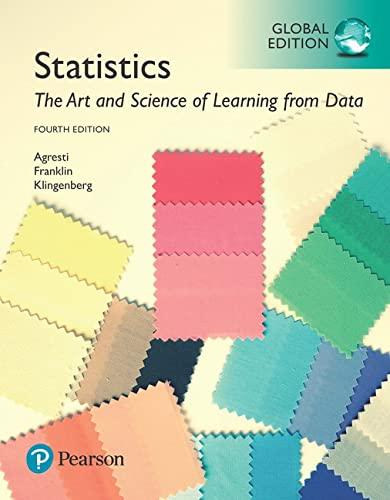11.5 Marital happiness and income In the GSS, subjects who were married were asked about the happiness
Question:
11.5 Marital happiness and income In the GSS, subjects who were married were asked about the happiness of their marriage, the variable coded as HAPMAR.
a. Go to the GSS website sda.berkeley.edu/GSS/, click GSS with no weight as the default, and construct a contingency table for 2012 relating family income
(measured as in Table 11.1) to marital happiness:
Enter FINRELA(r:4;3;2) as the row variable (where 4 = “above average,” 3 = “average,” and 2 = “below average”) and HAPMAR(r:3;2;1) as the column variable
(3 = not too, 2 = pretty, and 1 = very happy).
As the selection filter, enter YEAR(2012). Under Output Options, put a check in the row box (instead of in the column box) for the Percentaging option and put a check in the Summary Statistics box further below.
Click on Run the Table.
b. Construct a table or graph that shows the conditional distributions of marital happiness, given family income.
How would you describe the association?
c. Compare the conditional distributions to those in Table 11.2. For a given family income, what tends to be higher, general happiness or marital happiness for those who are married? Explain.
Step by Step Answer:

Statistics The Art And Science Of Learning From Data
ISBN: 9781292164878
4th Global Edition
Authors: Alan Agresti, Christine A. Franklin, Bernhard Klingenberg





